Business IN ACTION
CITI
Grandes oportunidades para captar nuevos flujos de inversión en la región, provenientes de las exportaciones de bienes y servicios a través del nearshoring

Great opportunities to attract new investment flows in the region, coming from the export of goods and services through nearshoring pág. 10
KPMG
La tecnología como parte de los equipos fiscales Technology as part of tax teams pág. 14
Comité Fiscal FEBRERO 2023 EDICIÓN 80
__________________
Business IN ACTION
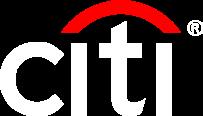

FEBRERO 2023 EDICIÓN 80
Business IN ACTION


FEBRERO 2023 EDICIÓN 80
Your Concierge for Business

Leadership Circle
CITI
Índice | Index
26
Grandes oportunidades para captar nuevos flujos de inversión en la región, provenientes de las exportaciones de bienes y servicios a través del nearshoring
Great opportunities to attract new investment flows in the region, coming from the export of goods and services through nearshoring
Julio Álvarez | CCO Citi Guatemala
14
KPMG
La tecnología como parte de los equipos fiscales
Technology as part of tax teams
Christian Aldana Castillo | Tax Partner
22
President
PWC
El rol de los impuestos en la lucha contra el cambio climático
The role of taxes in the fight against climate change
Laura Roquicholi | Senior Manager
María Stella Román de Aragón
AmCham's Executive Director
Waleska Sterkel
Executive Director Assistant
Grethel Rendón
Trade Center Manager
Grecia Ramírez
Trade Center Assistant
Otto García
Committees Coordinator
Ana Lucía Pérez
Communications Coordinator
Lisa Peña
Layout & Design
Erwin Acajabón
Translation
International Business Academy
General Enquiries
5 Avenida 5-55 Zona 14
Edificio Europlaza, Torre I, Nivel 5 (+502) 2417-0800
www.amchamguate.com
DELOITTE Digitalización de procesos en la recaudación y fiscalización
Digitalization of tax collection and auditing processes
MOLLERLAW
Cumplimiento electoral | La importancia de contar con mecanismos internos que me permitan mitigar riesgos
Electoral Compliance | The importance of having internal mechanisms that allow to mitigate risks
Gabriel-Gómez | Socio
DELOITTE
Walter Martínez | Socio de Impuestos, Business Process Solutions y Comercio Internacional 30 34
Las regalías y sus implicaciones fiscales y de precios de transferencia en Guatemala
Royalties and their tax and transfer pricing implications in Guatemala
Mario Coyoy | Socio de Precios de Transferencia
42 41
Eventos en AmCham Connect May Events in AmCham Connect
AmCham in Pictures
Most relevant News and Events of AmCham
Plumas invitadas | Contributors
CITI Julio Álvarez
CCO Citi Guatemala
KPMG
Christian Aldana Castillo Tax Partner
PWC Laura Roquicholi Manager
MOLLERLAW
Gabriel-Gómez, Socio
DELOITTE
Walter Martínez
Socio de Impuestos, Business Process Solutions y Comercio Internacional
DELOITTE
Mario Coyoy
Socio de Precios de Transferencia
María Andrea González
Socia de Impuestos
Raúl Gracias
Gerente Senior de Precios de Transferencia
Business in Action 2023 5
10
COPYRIGHT All material appearing in Business In Action By AmCham is copyright unless otherwise stated or it may rest with the provider of the supplied material. Business in Action takes all care to ensure information is correct at time of printing, but the publisher accepts no responsibility or liability for the accuracy of any information contained in the text or advertisements. Views expressed are not necessarily endorsed by the publisher or editor.
Words from our president
María Stella Román de Aragón
President
En Guatemala se está experimentando una transformación digital en el sector fiscal, con el fin de tener mejores controles que permitan ser más transparentes en los procesos, con transacciones más rápidas. Hemos sido testigos de la creciente digitalización de servicios financieros, como la FEL y procesos aduaneros por ventanilla electrónica. Esto ha llevado a un cambio en la recaudación y control de impuestos, dando resultados positivos a las autoridades.

Los gobiernos han introducido nuevas políticas y regulaciones tributarias, además de utilizar soluciones digitales para mejorar sus sistemas de recaudación de impuestos. Es importante que las organizaciones y las personas se mantengan al día con las últimas normas y prácticas fiscales para garantizar el cumplimiento de las leyes locales, conociendo la modernización y procesos digitales puede ayudar a reducir costos.
Ante la política fiscal cambiante, los empresarios debemos mantenernos al día con las tendencias y condiciones económicas; avances en tecnología y los beneficios de aplicarlo en políticas fiscales; y todo para crear una economía más eficiente.
A digital transformation in the tax sector is underway in Guatemala with the aim of having better control that allows more transparent processes, with faster transactions. We have witnessed the growing digitalization of financial services, such as Electronic Invoicing (FEL, acronym in Spanish) and customs procedures through electronic windows. This has led to a change in tax collection and control, yielding positive results for authorities.
Governments have introduced new tax policies and regulations in addition to using digital solutions to improve their tax collection systems. It is important that organizations and individuals keep up with the latest tax regulations and procedures in order to ensure compliance with local laws. Learning about modernization and digital processes can help to reduce costs.
In the face of changing tax policies, we entrepreneurs must keep up with new trends and economic conditions, technological advances and the benefits from applying them to tax policies, all of this to create a more efficient economy.
6 Business in Action 2023
Words from our President
Waleska Sterkel de Ortiz
 Executive Director
Executive Director
Estimado lector,
Los impuestos juegan un papel importante para regular la actividad económica, financiar servicios públicos y redistribuir la riqueza. En esta edición de la Business In Action, nuestro Comité Fiscal de Amcham nos habla de la digitalización de procesos en la recaudación y fiscalización, mecanismos internos para mitigar riesgos, las implicaciones de las regalías en precios de transferencia en Guatemala, los impuestos y el cambio climático, entre otros temas. Además, CITI Bank habla de oportunidades para captar nuevos flujos de inversión en la región; y KPMG aborda la tecnología como parte de los equipos fiscales. Acompáñenos en esta publicación a conocer más del tema, desde las palabras de los expertos.
Dear reader,
Taxes play an important role in regulating the economic activity, financing public services and redistributing wealth. In this edition of Business In Action, our AmCham’s Tax Committee talks about digitalization processes of tax collection and auditing, internal mechanisms to mitigate risks, the implications of royalties of transfer pricing in Guatemala, taxes and climate change, among other issues. In addition, Citibank talks about opportunities to attract new flows of investment in the region and KPMG addresses technology as part of tax teams. Join us to learn more about the subject from experts in this publication.
7 Business in Action 2023
Editorial
8 Business in Action 2023
LEADERSHIP CIRCLE 2023
9 Business in Action 2023
Desde hace algunos años, las empresas estadounidenses han analizado la posibilidad de contar con proveedores internacionales en Centroamérica y El Caribe por su cercanía con EEUU, lo que representa una gran oportunidad para la región, sobre todo, porque el principal destino de las exportaciones del istmo ya es Estados Unidos.

Esta práctica de transferir las operaciones de las empresas a países, en especial aquellos cercanos a los compradores, se llama nearshoring. Los ejecutivos logísticos están adoptando esta modalidad como una estrategia para mejorar su servicio al cliente.
Actualmente, el mayor número de importaciones de Estados Unidos provienen de China (19%), seguida de México (13.7%) Canadá (11.5%) y Japón (5.1%). Esta dependencia de EEUU con China está generando varios problemas que se han acentuado con la pandemia, dentro de ellos: el cierre de puertos y plantas industriales, que ha ocasionado interrupciones en las cadenas globales de suministros y por ende incremento en los costos de transporte, que al final se trasladan al consumidor. Todo esto aunado a la diferencia en horarios de trabajo y temas relacionados a la cultura e idioma.
Por su ubicación privilegiada, Centroamérica ofrece la oportunidad de suplir al principal mercado a nivel mundial. Su economía es la quinta más grande de América Latina después de Brasil, México, Argentina, y Colombia, y es junto a México, una de las áreas más industrializadas y con menor dependencia en productos primarios de América Latina.
De acuerdo a cálculos del Banco Interamericano

10 Business in Action 2023
Grandes oportunidades para captar nuevos flujos de inversión en la región, provenientes de las exportaciones de bienes y servicios a través del nearshoring
Julio Álvarez CCO Citi Guatemala
“El comercio global está avanzado ágilmente debido a la ayuda de la tecnología; esto hace necesario que las organizaciones busquen la implementación de controles automatizados que les permitan identificar si los cumplimientos derivados de los negocios están siendo debidamente atendidos.”
de Desarrollo (BID), la ganancia potencial para América Latina y El Caribe proveniente de las oportunidades de nearshoring en el corto y mediano plazo, podrían representar un aumento de hasta US$ 78.000 millones en nuevas exportaciones de bienes y servicios, con importantes oportunidades para la región en la industria automotriz, textil, farmacéutica y energías renovables, entre otras.
El BID menciona que México y Brasil tendrían las mayores oportunidades, aunque todos los países se beneficiarían, de acuerdo con datos adelantados de un estudio a publicarse pronto. La cifra de US$78.000 millones se compone de US$64.000 millones en comercio de bienes y US$14.000 millones en comercio de servicios.
Los cálculos del BID detallan las oportunidades potenciales que este incremento de exportaciones por nearshoring podría traer en US$ millones para Centroamérica y El Caribe. Las cifras por país son las siguientes: Bahamas, con un total de 177.0; Costa Rica, 1,544.8; República Dominicana, 1,580.70; Guatemala, 785.7; Honduras, 1,242.8; Haití, 253.1; Jamaica, 138.5; Nicaragua, 568.5; Panamá, 802.0; El Salvador, 1,049.9; Trinidad & Tobago, 476.7.
Para que la región pueda aprovechar la oportunidad que se abre para aumentar la participación en las Cadenas Globales de Valor, el BID propone que
los países trabajen en lo que denomina una estrategia de “3Is”: Inversión, Infraestructura e Integración. Centroamérica ya lo está haciendo.
A Finales del 2022 tuve la oportunidad de ser parte del Guatemala Investor Summit, evento que se llevó a cabo en los Headquarters de Citi en Nueva York y al cual asistió el Sr. Presidente Alejandro Giammattei, su equipo y un número grande de clientes e inversionistas. El Presidente Giammattei presentó a Guatemala como “El lugar ideal para nearshoring e inversiones en Centroamérica y el país más resiliente de América”.
Para Citi, que trabaja con corporaciones multinacionales, esto representa una gran oportunidad para asesorar a nuevas empresas y corporaciones en la región, a través de su amplia gama de productos y servicios financieros, incluyendo servicios bancarios y de crédito al consumidor, servicios bancarios corporativos y de inversión, así como corretaje de valores y administración patrimonial.
El banco es además un enlace, una conexión, que orienta y genera valor ayudando a sus clientes a insertarse en economías mundiales, conectándolos con stakeholders en otros países.

11 Business in Action 2023 LEADERSHIP CIRCLE
Álvarez CCO Citi Guatemala


For some years now, US companies have been considering the possibility of having international suppliers in Central America and the Caribbean due to their proximity to the US, which represents a great opportunity for the region mainly because the destination of exports from the isthmus is actually the US.
This practice of transferring business operations to other countries, especially those close to buyers, is called nearshoring. Logistics executives are adopting this modality as a strategy to improve customer service.
Currently, the largest number of US imports come from China (19%), followed by Mexico (13.7%), Canada (11.5%) and Japan (5.1%). This US dependence on China is generating several problems that have worsened due to the pandemic, among them: The closure of ports and industrial plants that have caused disruptions in global supply chains
and therefore there has been an increase in transportation costs which is ultimately passed on to the consumer. All this together with the difference in work schedules and issues related to culture and language.
Due to its privileged location, Central America offers the opportunity to supply the world’s main market. Its economy is the fifth largest in Latin America, after Brazil, Mexico, Argentina and Colombia and together with Mexico, it is one of the most industrialized areas and it is less dependent on primary products from Latin America.
According to calculations from the Inter-American Development Bank (IDB), the potential benefit for
12 Business in Action 2023
Julio
“Global commerce is advancing nimbly due to the help of technology; this makes it necessary for organizations to seek the implementation of automated controls that will allow them to identify whether compliances derived from business are being properly addressed.”
Great opportunities to attract new investment flows in the region, coming from the export of goods and services through nearshoring
Latin America and the Caribbean from nearshoring opportunities in the short and medium term could represent an increase of up to US$78 billion in new product and service exports, with significant opportunities for the region in the automotive, textile, pharmaceutical and renewable energy industries, among others.
The IDB mentions that Mexico and Brazil would have the greatest opportunities, although all other countries would also benefit, according to early data from a study to be published soon. The US$78 billion figure is made up by US$64 billion in products trade and US$14 billion in services trade.
IDB’s calculations specify the potential opportunities that this increase in exports from nearshoring could bring to Central America and the Caribbean in millions of US dollars. The figures by country are the following: Bahamas, with a total of US$177 million; Costa Rica, US$1.5 billion; Dominican Republic, US$1.6 billion; Guatemala, US$785.7 million; Honduras, US$1.2 billion; Haiti, US$253.1 million; Jamaica, US$138.5 million; Nicaragua, US$568.5 million; Panama, US$802 million; El Salvador, US$1.05 billion; Trinidad & Tobago, US$476.7 million.
In order for the region to leverage the opportunity that is opening up to increase participation in Global
Value Chains, the IDB proposes that countries work on what it is called the “3Is” strategy: Investment, Infrastructure and Integration, which Central America is already doing.
By the end of 2022 I had the opportunity to be part of the Guatemala Investor Summit, an event that took place at Citi Headquarters in New York which was attended by President Alejandro Giammattei, his team and a large number of customers and investors. President Giammattei presented Guatemala as “The ideal place for nearshoring and investment in Central America and the most resilient country in the Americas.”
For Citi, who works with multinational corporations, this represents a great opportunity to advise new businesses and corporations in the region, through its wide range of financial products and services, including banking and credit services to the consumer, corporate and investment banking services, as well as securities brokerage and wealth management.
The bank is also a link that guides and generates value by helping their customers to join world economies, connecting them to stakeholders in other countries.

13 Business in Action 2023 LEADERSHIP CIRCLE
Christian Aldana Castillo Socio de Impuestos | KPMG en Guatemala
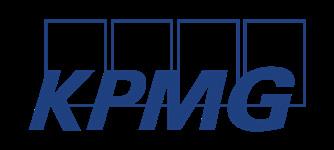
La tecnología como parte de los equipos fiscales
Constantemente vemos como los avances tecnológicos continúan acelerando y haciendo más eficientes diversas actividades mercantiles; estamos viviendo cambios disruptivos en algunas industrias respecto a la manera de ofrecer sus productos y servicios; vemos emprendimientos con creatividad apalancados con recursos digitales de fácil acceso que les permite llegar a los consumidores esperados, incluso fuera de sus propias fronteras. Todo esto, sin duda, resulta de la combinación de talento humano y el uso de herramientas tecnológicas.
El ámbito tributario no se ha quedado atrás y vemos un complejo futuro fiscal con expectativas de transparencia global y búsqueda de intercambio de información entre países. En nuestro caso, Guatemala, vemos como las autoridades tributarias han avanzado desde hace algunos años y ahora, con mayor velocidad, en la utilización de herramientas tecnológicas que les permitan mejores enfoques en la fiscalización, mayor calidad en la información de los contribuyentes y eficiente análisis de los datos económicos declarados en los distintos tributos. Durante la rendición de cuentas 2022 que realizó la Superintendencia de Administración Tributaria el mes pasado, comentaron sobre los avances en la implementación de sistemas y herramientas tecnológicas útiles en sus diferentes gestiones; por ejemplo, en el caso de la Intendencia de Atención al Contribuyente destacaron los resultados obtenidos por el uso de la Agencia Virtual y el RTU Digital; mientras tanto, para la Intendencia de Recaudación enfatizaron el uso de herramientas para facilitar el control de la Factura Electrónica, Declaraguate, Solvencia Fiscal y para la Intendencia de Fiscalización resaltaron la tecnología utilizada para análisis sectorial y las fiscalizaciones electrónicas, entre otros.
Lo anterior nos lleva a detenernos y meditar cómo, las organizaciones empresariales, se están preparando para los nuevos desafíos de fiscalización que deben atenderse y anticipar áreas de mejora en los controles

14 Business in Action 2023
“El comercio global está avanzado ágilmente debido a la ayuda de la tecnología; esto hace necesario que las organizaciones busquen la implementación de controles automatizados que les permitan identificar si los cumplimientos derivados de los negocios están siendo debidamente atendidos.”
internos; es decir, ya no solo enfocarse en obtener la información de sus diferentes fuentes contables y administrativas para subirlas a los formularios correspondientes y realizar el pago que resulte.
Sin lugar a duda se hace necesario revisar si se cuenta con las herramientas electrónicas y personal calificado que permita lograr avances decisivos en el cumplimiento tributario; prácticamente, evaluar si debe realizarse alguna transformación de fondo dentro de la función fiscal de las organizaciones.
La tecnología aplicada al cumplimiento fiscal se está convirtiendo en uno de los elementos más importantes a revisar dentro de las organizaciones, con la finalidad de diseñar herramientas electrónicas que permitan a los departamentos fiscales una ejecución eficiente. La tecnología y la innovación pueden ayudar a marcar la diferencia entre un equipo fiscal que trabaja bajo un enfoque de respuesta defensiva, de un equipo que trabaja bajo un enfoque de respuesta proactiva, basado en su plan que incluye la tecnología y le permite anticipar sus respuestas, tanto a situaciones recurrentes como extraordinarias.
Para enfrentar estos retos, es conveniente que la gerencia corporativa incluya dentro de su agenda, realizar una evaluación inicial que les permita conocer, entre otros aspectos si:
• La estratégica de negocios corporativa que se tiene para los próximos años considera los aspectos fiscales, validando si la misma está alineada con los controles mínimos necesarios para el efecto.
Las áreas operativas de mayor volumen transaccional y documental, donde los equipos internos revisan el cumplimiento mediante muestreo aleatorio o confiando en la integridad y exactitud de la información generada por los sistemas operativos, tienen visualizada la organización, estandarización y automatización de los procesos que ayude a mejorar la gestión del riesgo y, de ser posible, brinde ahorro en costos.
• Hay necesidades de equipo tecnológico, definiendo las características que deberá tener a efecto de que sea de fácil interpretación y pueda integrarse con los sistemas operativos que se utilizan.
• El equipo funcional idóneo que brinde el soporte adecuado para el control y análisis de los datos procesados por las herramientas electrónicas tendría la capacidad de atender eficientemente los requerimientos de información recibidos de la autoridad fiscal.
Estos podrían ser los primeros pasos que ayuden a gestionar de mejor manera el riesgo fiscal, el cumplimiento tributario y la protección de la reputación corporativa.
Reflexionar, agregando el ingrediente fiscal, sobre todos los procesos actuales de los negocios y las iniciativas que se estén madurando es fundamental ya que dará a la dirección corporativa la capacidad de identificar soluciones que permitan asegurarse un proceso de fiscalización, con el apoyo de tecnología, sin mayores sobresaltos.

15 Business in Action 2023 LEADERSHIP CIRCLE
Technology as part of tax teams
We are constantly seeing how technological advancements continue accelerating and making trade activities more efficient. We are experiencing disruptive changes in some industries regarding the way to offer our products and services. We see creative enterprises leveraging easily accessible digital resources that allow them to reach the intended consumers, even beyond their own borders. All this undoubtedly stemming from the combination of human talent and the use of technological tools.
The tax field has not been left behind and we are witnessing a complex tax future with expectations of global transparency and the search for information exchange between countries. In the case of Guatemala, we have seen how tax authorities have been advancing for some years and now, with greater speed, using technological tools that allow them to address tax control in a better way, greater quality in taxpayer information and efficient analysis of economic data declared in the different taxes.
Christian Aldana Castillo Tax Partner | PMG Guatemala

During the 2022 rendering of accounts conducted by the Superintendence of Tax Administration (SAT, acronym in Spanish) last month, comments were made about the advances in the implementation of useful technological systems and tools in their different procedures. For example, in the case of the Taxpayer Service Intendancy, the results obtained from the use of the Virtual Agency and the Unified Tax Registration (RTU, acronym in Spanish) were highlighted. Meanwhile, at the Tax Collection Intendancy the use of tools to facilitate control of the Electronic Invoice, Declaraguate and Fiscal Solvency was highlighted. Finally, for the Tax Auditing Intendancy, the technology used for the sector analysis and electronic audits was also highlighted, among other things.
The above leads us to stop and meditate on how business organizations are preparing to face the new control challenges that must be addressed and anticipate which areas need to be improved regarding internal controls. In other words, not only focusing on obtaining information from their different accounting and administrative sources to
16 Business in Action 2023
“Global trade is rapidly advancing due to the assistance of technology. This makes it necessary for companies to seek the implementation of automated controls that allow them to determine if business compliance is being met.”
upload it to the corresponding forms and make the needed payment.
It is undoubtedly necessary to check if the electronic tools and qualified staff are available to lead significant advances in tax compliance, practically, to evaluate if an in-depth transformation is necessary within the organizations tax function.

Technology applied to tax compliance is becoming one of the most important elements to review within organizations, with the aim of designing electronic tools that allow tax departments an efficient execution. Technology and innovation can help make the difference between a tax team that works under an approach of defensive response and a team that works under a proactive response approach, based on its plan that includes technology which allows anticipated responses to both recurring and extraordinary situations.
In order to face these challenges, it is best that Corporate Management include in its agenda an initial evaluation that allows them to know, among other aspects, if:
• The corporate business strategy for the coming years considers tax aspects, validating whether it is aligned with the necessary minimum controls to that purpose.
• The operational areas with the highest transactional and document volume, where
internal teams review compliance by random sampling or trusting the completeness and accuracy of the information generated by operational systems, have envisioned the organization, standardization and automation of processes that help improving risk management and if possible, provide cost savings.
• There are technological equipment needs, defining the necessary characteristics for an easy interpretation and integration to the operational systems in use.
• The appropriate functional equipment that provides adequate support for the control and analysis of the data processed by the electronic tools would have the capacity to efficiently meet the information requirements received from the tax authority.
These could be the first steps that help managing tax risk, tax compliance and the protection of corporate reputation in a better way.
Reflecting, adding the tax ingredient on all current business processes and maturing initiatives is essential as it will give corporate management the ability to identify solutions that will ensure a technology-supported tax auditing process without major problems.
17 Business in Action 2023 LEADERSHIP CIRCLE
Leadership Circle 2023

















18 Business in Action 2023

20 Business in Action 2023
COMMITTEES
21 Business in Action 2023
Laura Roquicholi Senior Manager

Precios y mercados de carbono: ¿Qué? ¿Por qué? y ¿Cómo ayudan?
Un mercado de carbono se circunscribe a cualquier sistema comercial a través del cual, países, empresas, personas y otras entidades pueden comprar o vender unidades de emisores de gases de efecto invernadero para cumplir con sus límites de emisiones obligatorios o voluntarios. Los precios al carbono, los impuestos
y los incentivos fiscales ecológicos influyen cada vez más en las decisiones que toman las empresas, ya sea que se apliquen directamente o a través de mercados de carbono. Este mecanismo crea impactos económicos al hacer que quien contamina pague, pero también crea un incentivo a cambiar a formas de producción más limpias, y por lo tanto modificar las tendencias del consumo de energía y materias primas. Un precio al carbono crearía incentivos para ajustar nuestro comportamiento. Los mercados de carbono pueden operar de diversas formas; por ejemplo a través de impuestos al carbono, sistemas de comercio de emisiones o a través de compensaciones de carbono. En el caso de un impuesto al carbono, el gobierno determina la tarifa a aplicar sobre las emisiones de toneladas equivalentes de carbono y permite recolectar ingresos por impuestos que luego pueden ser usados por los países para apoyar en sus iniciativas contra el cambio climático. En el caso de sistemas de comercio de emisiones, el gobierno fija la cantidad de carbono a comerciar y el mercado determina el precio. En el caso de las compensaciones de carbono, se recompensa en forma de créditos de carbono si se realizan actividades “limpias”.

22 Business in Action 2023
“Los impuestos ambientales se abren paso para proteger el medio ambiente, con el fin de gravar los comportamientos nocivos para la salud del planeta.”
El rol de los impuestos en la lucha contra el cambio climático
Impuestos al carbono: ¿Única solución? ¿Cuáles son los riesgos y preocupaciones?
Los impuestos al carbono, son una forma de tarificación del carbono, buscan resolver este problema y hacer que los emisores paguen por sus emisiones de carbono.

Los impuestos al carbono tienen que ser fijados de forma tal de que los países avancen en una ruta de transición verde y una economía robusta, mitigando los riesgos del cambio climático; pero esta transición también debe ser justa y equitativa. Si esto no se prioriza al momento de
fijarlos, podríamos encontrarnos con impuestos regresivos.
En virtud de lo anterior, el papel de los gobiernos será clave para el diseño de los impuestos al carbono, los sistemas de comercio de emisiones y cómo esas políticas se extenderán gradualmente a diferentes sectores de la economía.
En virtud de lo anterior, a nivel corporativo, las empresas deben mantenerse al tanto de estos desarrollos y planificarse de antemano, especialmente si operan en múltiples jurisdicciones. Al igual que con los impuestos regulares, para tomar decisiones estratégicas.
23 Business in Action 2023
EXPERT OUTLOOK
The role of taxes in the fight against climate change
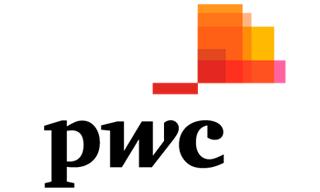
Carbon pricing and markets: What? Why? And how do they help? A carbon market is defined as any trade system through which countries, companies, individuals and other entities can buy or sell greenhouse gases emitting items in order to comply with their voluntary or mandatory emission limits. Carbon prices and ecological taxes and tax incentives are increasingly influencing business decisions, either directly or through carbon markets. This mechanism creates economic impacts by making polluters pay, but it also creates an incentive to change to cleaner production forms, therefore modifying trends in energy and raw materials consumption. One price for carbon would create incentives to adjust our behavior. Carbon markets
Laura Roquicholi Senior Manager
can operate in different ways, for instance through carbon taxes, emission trading systems or through carbon offsets. In the case of a carbon tax, the government determines the rate to be applied on emissions of equivalent tons of carbon and allows for the collection of tax revenues that can then be used by countries to support their climate change initiatives. In the case of emission trading systems, the government sets the amount of carbon to be traded and the market determines the price. In the case of carbon offsets, carbon credits are rewarded if “clean” activities are undertaken. Carbon taxes: Are they the only solution? What are the risks and concerns?

24 Business in Action 2023
“Environmental taxes are making their appearance to protect the environment with the aim of taxing harmful actions to the health of the planet.”
Carbon taxes are a form of carbon pricing. They seek to solve this problem and make emitters pay for their carbon emissions. Carbon taxes must be set in such a way that countries move forward on a green transition path towards a robust economy, mitigating climatic change risks, but this transition must be fair. If this is no prioritized at the moment of setting them, we could be facing regressive taxes. Stemming from the above, the role of governments will be key in the design of carbon taxes, emission trading systems and how these policies will gradually extend to different sectors of the economy. Therefore, at a corporate level, companies need to
be up-to-date with these developments and plan beforehand, especially if they operate in multiple jurisdictions. The same with regular taxes, in order to make strategic decisions.
Environmental taxes are making their appearance to protect the environment with the aim of taxing harmful conducts for the planet’s health. At a corporate level, companies need to be up-to-date with these developments and plan beforehand, especially if they operate in multiple jurisdictions. The same with regular taxes, in order to make strategic decisions.

25 Business in Action 2023
EXPERT OUTLOOK
Martínez Socio
Siendo que SAT se encuentra en proceso de implementar mejoras continuas para la eficiencia en la recaudación y fiscalización, esto genera retos y oportunidades para los contribuyentes. Derivado de lo anterior, podemos mencionar que

la transformación de procesos de control interno y de sistemas deberá ser un enfoque medular para los contribuyentes, ya que la transformación de fiscalización para la SAT inició en un proceso FEL y hoy en día se materializa en libros electrónicos (compras y ventas) que están a disposición de los contribuyentes mediante la herramienta de la SAT. Por lo tanto, debemos alinearnos a que todos nuestros procesos sean eficientes y que los mismos puedan y deban enfocarse en un entorno digital, esto para cumplir con los lineamientos que el fisco requiere y sea un proceso de migración efectivo. En Latinoamérica, los fiscos se han enfocado en los procesos de digitalización y su evolución tomó como base la factura electrónica, llegando a la contabilidad, presentación de sus obligaciones fiscales y/o requerimientos, auditorias y controversias en modalidad electrónica; es

26 Business in Action 2023
“La Administración Tributaria se ha enfocado en realizar los avances y mejoras tecnológicas en sus sistemas para obtener una recaudación y fiscalización más expedita derivado a la era digital en la que estamos viviendo.”
Digitalización de procesos en la recaudación y fiscalización
Walter
de Impuestos, Business Process Solutions y Comercio Internacional
por esto que, Guatemala siendo pionero en la región centroamericana creemos que sin duda el fisco está actuando para avanzar y llegar a estos procesos. Si nos enfocamos en las acciones que la Administración Tributaria enmarca en su plan anual de recaudación, control y fiscalización, se enfocan en la la utilización de sistemas de fiscalización y robustesimiento del sistema informático de
gestión y análisis de riesgo. En ese sentido, como contribuyente será necesario actuar en un corto plazo creando condiciones que automaticen procesos y mejoren los sistemas de cara a generar información que se alineada y consistente que facilite la presentación y verificación de los tributos. Será necesarios plantear estrategias, planificaciones y diagnósticos para tomar en consideración todas las aristas que se generen por el tipo negocio y/o industria de cada contribuyente.

27 Business in Action 2023
EXPERT OUTLOOK
Digitalization of tax collection and auditing processes
Since the Superintendence of Tax Administration (SAT, acronym in Spanish) is in the process of implementing continuous improvements in the efficiency of tax collection and auditing, challenges and opportunities are generated for taxpayers. Stemming from the above, it can be mentioned that the transformation of internal control processes and systems will have to be a core focus for taxpayers, since the transformation of tax auditing for SAT started with the implementation of the Electronic
Walter Martínez Tax Partner, Business Process Solutions and International Trade, Deloitte Guatemala

Invoicing (FEL, acronym in Spanish) process and today it is materialized in electronic books (purchases and sales) that are available to taxpayers through the SAT tool. Therefore, we must align ourselves so that all our processes are efficient and that they can and should be focused on a digital environment, in order to comply with the guidelines required by the tax authorities and have an effective migration process. In Latin America, tax authorities have focused on digitalization processes, having taken the electronic invoice

28 Business in Action 2023
“The Tax administration has focused on carrying out technological advances and improvements in their systems in order to obtain more expeditious tax collection and auditing due to the digital era in which we are living.”
as the basis for their evolution, reaching the accounting, presentation of tax obligations and / or requirements, audits and disputes in electronic mode. This is why, Guatemala being a pioneer in the Central American region, we believe that without a doubt, tax authorities are acting to advance and accomplish these processes.
If we concentrate on the actions that the Tax Administration maps out in its annual collection, control and auditing plan, they are
focusing on the use of auditing systems and strengthening of the risk management and analysis information system. In this sense, as a taxpayer, it will be necessary to act in the short term, creating conditions that automate processes and improve systems in order to generate aligned and consistent information that facilitates the filing and verification of taxes. It will be necessary to propose strategies, planning and diagnoses to take. into consideration all the facets generated by each taxpayer’s business and / or industry.

29 Business in Action 2023
EXPERT OUTLOOK
En los últimos procesos electorales nacionales, algunas de las personas que realizaron financiamiento electoral han atravesado por problemas de índole administrativo e incluso penal; esto ha causado inquietud entre quienes han brindado el mismo, en virtud de que indican que se enfrentan a una normativa nacional compleja de comprender, y con distintos reglamentos aplicables.
Cabe remarcar, que la participación ciudadana en los procesos electorales en sus diferentes manifestaciones es muy importante, como ejemplo de ello el financiamiento electoral constituye una actividad importante para el país por ser parte del ejercicio de la democracia, y del ejercicio del derecho de elegir y ser electo.
La Ley Electoral y de Partidos Políticos en su artículo 21 Quater, define al Financista de organización política o financista político, en los siguientes términos: “Es toda persona, individual o jurídica nacional que realice una contribución, en dinero o en especie, o por medio de cualquier contratación que no se realice en condiciones de mercado, a cualquier organización política, asociación con fines políticos o entidad de cualquier tipo, nacional o extranjera, que realice actividades que

Cumplimiento electoral La importancia de contar con mecanismos internos que me permitan mitigar riesgos
beneficien un partido político, un candidato o persona con interés en postularse para un cargo de elección popular.”

Teniendo en cuenta lo antes indicado, nos permitimos efectuar algunas recomendaciones de cómo el contar con políticas internas que nos permitan aplicar un adecuado “Cumplimiento electoral”, nos brindará las herramientas para mitigar adecuadamente estos riesgos futuros, facilitando de esta forma nuestra eventual participación en tan importante actividad de que hacer democrático de nuestro país. La World Compliance Asociation define al corporate compliance como: “Un conjunto de procedimientos y buenas prácticas adoptados por las organizaciones para identificar y clasificar los riesgos operativos y legales a los que se enfrentan y establecer mecanismos internos de prevención, gestión, control y reacción frente a los mismos.” * Es decir que cumplimiento electoral, debe ser parte del corporate compliance en las organizaciones, lo que permitirá la aplicación de procedimientos y buenas prácticas para la identificación de los riesgos que puedan existir al realizar financiamiento electoral, y establecimiento de procedimientos internos de prevención, gestión, control y reacción. Para los efectos ilustrativos, hacemos referencia a algunos de los aspectos más relevantes, que deben ser tomados en cuenta:
• Que existen dos fuentes de financiamiento en materia electoral, el financiamiento público y
30 Business in Action 2023
Gabriel-Gómez Socio
el privado, y debemos estar seguros de cuando opera cada uno;
• *https://www.worldcomplianceassociation. com/que-es-compliance.php
• Que el Tribunal Supremo Electoral -TSEcomo autoridad máxima en esta materia, es el encargado de establecer el monto máximo por el que puede otorgarse financiamiento electoral, siguiendo para el efecto los procedimientos establecidos en ley;
• Que las aportaciones para campañas electorales se pueden dividir en aportaciones dinerarias y aportaciones no dinerarias o en especie y debe en las políticas internas dejarse claramente estipulado en que consiste cada una de ellas y los valores que se asignaran;
• Que las aportaciones dinerarias, mayores a Q50,000.00 o su equivalente en dólares de los Estados Unidos de América, únicamente pueden realizarse por medio de cheque, transferencia u otro medio proporcionado por el sistema bancario;

• Que existen prohibiciones, tales como las de realizar donaciones a favor de los candidatos, y la recepción de aportaciones anónimas
Cabe indicar que existen otros elementos que
también deben tomarse en cuenta, tales como: montos máximos de aportación para personas relacionadas o vinculadas entre sí, la elaboración de un acta notarial a presentar al realizar aportaciones por montos mayores, contar con libros de registro al realizar aportaciones, etc.
Existen muchos aspectos legales y administrativos a considerar, algunos de los cuales como por ejemplo los reglamentos de la ley Electoral y de partidos políticos, fueron objeto de reformas en los años 2022 y 2023, a efecto de contar con un efectivo sistema de cumplimiento electoral, para ser un sistema eficiente y operativo, que cuente con mecanismos internos de prevención, gestión, control y reacción La mayor parte de las personas toma la determinación de participar en los procesos electorales, por medio de brindar financiamiento, en el último momento, lo que provoca que no se cuente con las medidas preventivas necesarias; recordemos que contar con un correcto y adecuado cumplimiento electoral, nos permitirá estar preparados y realizar una correcta mitigación de riesgos, por lo que contar con asesoría integral y especializada en la materia será lo más adecuado para prevenir especialmente riegos legales y reputacionales.
31 Business in Action 2023
EXPERT OUTLOOK
Electoral Compliance
After the last national election, some political financiers have been having administrative and even criminal problems. This has caused unrest among those who have provided political financing because they are facing national regulations that are difficult to understand and with different applicable regulations.
It is worth mentioning that citizen participation in electoral processes of any kind is very important. For example, political financing is an important activity for the country as it is part of the exercise of democracy and the right to elect and be elected.
The Electoral and Political Parties Law defines in its article 21 the political organization financier or political financier in the following terms: “It is any national entity, whether individual or legal, that makes a contribution, in money or in kind, or by means of any contracting that is not made under market conditions, to any political organization, association with political purposes or entity of any kind, national or foreign, that performs activities that benefit a political party, a candidate or person interested in running for a popularly elected office.”
Considering the above, we would like to make some recommendations on how having internal policies that allow us to apply a proper “Electoral Compliance”, will provide us with the tools to adequately mitigate these future risks, thus
 Gabriel-Gómez Partner
Gabriel-Gómez Partner
facilitating our eventual participation in such an important activity of the democratic exercise in our country.
The World Compliance Association defines “corporate compliance” as: “A set of procedures and good practices adopted by organizations to identify and classify the operational and legal risks they face and to establish internal mechanisms to prevent, manage, control and react to them.
In other words, electoral compliance must be part of corporate compliance in organizations, which will allow the application of procedures and good practices to identify risks that may rise when carrying out political financing, establishing internal procedures for prevention, management, control and reaction.
For illustrative purposes, we refer to some of the most relevant aspects that should be taken into account:
• There are two sources of financing in electoral matters, public and private financing and we have to be aware when each of them applies.
*https://www.worldcomplianceassociation.

32 Business in Action 2023
The importance of having internal mechanisms that allow to mitigate risks
com/que-es-compliance.php
• The Supreme Electoral Tribunal (TSE, acronym in Spanish), as the highest authority in these matters, is in charge of establishing the maximum amount to be contributed for political financing, abiding to the procedures established by the law to this effect;
• Contributions for electoral campaigns can be divided into monetary and non-monetary and also in kind and what each of them consists of and the values to be assigned must be clearly stipulated in the internal policies;
• Monetary contributions greater than Q50,000.00 or its equivalent in US dollars can only be carried out through check, transfer or other means provided by the banking system;
• There are prohibitions such as making donations in favor of candidates and receiving anonymous contributions.
It is worth mentioning that there are other elements that should also be taken into account,
such as: Maximum contribution amounts for related individuals, the preparation of a notarial act to be presented when making contributions for larger amounts, having record books when making contributions, etc.
There are many legal and administrative aspects to be considered, like the Electoral and Political Parties Law regulations which were amended in 2022 and 2023, in order to have an effective electoral compliance system that has prevention, management, control and reaction internal mechanisms.
Most people decide to participate in electoral processes by contributing financing at the last minute, which prevents having the necessary preventive measures. Let us remember that having adequate electoral compliance will allow us to be prepared and properly mitigate risks. Therefore, having specialized and comprehensive advice in this matter will be most advisable to prevent legal and reputation problems in particular.

33 Business in Action 2023
EXPERT OUTLOOK
Los requisitos generales de deducibilidad en el ISR establecidos en la legislación guatemalteca son los siguientes:
1. La compañía debe tener un contrato privado con la propietaria de la marca (en muchos casos, entidad residente en el exterior),


debidamente protocolizado.
2. La marca debe estar registrada ante el Registro de la Propiedad Intelectual en Guatemala.


3. Si el documento emitido por la entidad del exterior por el cobro de las regalías es una “factura comercial”, la misma no estaría sujeta al Impuesto de Timbres Fiscales y Papel Sellado Especial para Protocolos, caso contrario el documento podría estar afecto al 3 % sobre el valor que figure en el mismo.
4. La tasa impositiva aplicable para la retención de ISR en concepto de regalías es del 15 %, la cual se genera al momento de efectuar el pago al no residente sin establecimiento permanente. Es importante mencionar que el pago debe realizarse a través del sistema bancario nacional para garantizar el cumplimiento con la normativa de bancarización.
5. También es importante hacer notar que las regalías deben estar efectivamente pagadas a la entidad del exterior durante el período impositivo al cual correspondan o bien antes
34 Business in Action 2023
“Actualmente es importante cumplir con los requisitos de deducibilidad establecidos en el ISR, así como evaluar, las condiciones desde el punto de vista de precios de transferencia, para confirmar que el valor de la regalía cumple con la normativa.”
Las regalías y sus implicaciones fiscales y de precios de transferencia en Guatemala
Mario Coyoy Socio de Precios de Transferencia
María Andrea González Socia de Impuestos
Mario Coyoy Gerente Senior de Precios de Transferencia
del vencimiento de la presentación de la declaración anual de ISR, con la finalidad de que ante una eventual revisión por parte de la Administración Tributaria, el gasto no sea objetable en su deducibilidad.
6. Es importante tomar en consideración que el límite deducible por regalías en el ISR es del 5 % de la renta bruta, por lo tanto, si en la práctica existiese un excedente, la diferencia deberá ser reportada como gasto no deducible.
Adicional a los requisitos establecidos en la legislación guatemalteca indicados anteriormente, desde el punto de vista de precios de transferencia existe también un factor que requiere especial atención. Este factor es
la “sustancia” que hay detrás del pago de las regalías, derivado del “valor” que puede producir un activo intangible con base en los activos, funciones y riesgos utilizados. Recordemos que las acciones BEPS (Base Erosión and Profit Shifting) 8, 9 y 10, publicadas por la OCDE, buscan orientar los resultados para efectos fiscales y de precios de transferencia a la generación de un “valor”.
Esta generación de valor es medible con base en el análisis de las funciones de desarrollo, mejora, mantenimiento, protección y explotación (DEMPE por sus siglas en inglés). Este análisis permite determinar quiénes son las partes a las cuales se les puede atribuir el derecho de una retribución por el valor de un activo.

35 Business in Action 2023
EXPERT OUTLOOK
Royalties and their tax and transfer pricing implications in Guatemala



The ISR’s deductibility general requirements established in the Guatemalan legislation are the following:
1. The company must have a private contract with the trademark’s owner (in many cases, an entity residing abroad), duly notarized.

2. The trademark must be registered at the Intellectual Property Registry in Guatemala.
3. If the document issued by the foreign entity for the collection of royalties is a “commercial
invoice,” it would not be subject to the Stamp Tax and Special Sealed Paper for Protocols, otherwise the document could be subject to the 3% tax on the value that appears in it.
4. The applicable tax rate for ISR retentions regarding royalties is 15%, which is generated at the moment of paying the non-resident without permanent domicile. It is important to mention that the payment must be made through the national banking system to ensure compliance with banking regulations.
5. It is also important to note that royalties must be effectively paid to the foreign entity during the tax period to which they correspond or before the due date for the annual ISR filing, so that in the case of an eventual review by the Tax Administration, the expense’s deductibility is not questioned.
36 Business in Action 2023
“Currently, it is important to comply with the deductibility requirements established in the Income Tax (ISR, acronym is Spanish), as well as evaluating conditions from the transfer pricing point of view in order to confirm that the royalty value complies with the regulation.”
Mario Coyoy Transfer Pricing Partner
María Andrea González Tax Partner
Mario Coyoy Transfer Pricing Senior Manager
6. It is important to take into consideration that the deductible limit for royalties in ISR is 5% of gross income, therefore, if in practice there were a surplus, the difference should be reported as a non-deductible expense.
In addition to the requirements established in the Guatemalan legislation indicated above, from the transfer pricing’s point of view there is also a factor that needs special attention. This factor is the “substance” behind the payment of royalties derived from the “value” that may produce an intangible asset based on the assets, functions and used risks. Let us remember that the Base Erosion and Profit Shifting (BEPS) actions 8, 9 and 10 published by the Organisation for Economic Co-operation and Development (OECD) seek to orient the results for tax and
transfer pricing effects to the generation of a “value”.

This generation of value is measurable based on the analysis of the development, enhancement, maintenance, protection and exploitation (DEMPE) functions. This analysis makes it possible to determine who are the parties to which the right to compensation for the value of an asset can be attributed.
The royalty payments made to non-resident related companies must not only comply with the tax requirements indicated before for this operation, but must also respond to a proper attribution of the right that exists towards the entities that have invested in Development, Enhancement, Maintenance, Protection and Exploitation (DEMPE) functions.
37 Business in Action 2023
EXPERT OUTLOOK
directoriodigital.amchamguate.com






39 WE CREATE UNIQUE EVENTS 2 0 2 3 w w w . b e t t y r e g a l a d o . c o m + 1 5 6 1 4 7 9 8 8 0 5






Bienvenidos a nuestra membresía Welcome to our membership DO ENERGY
AGENDA
OEA Y CTPAT: Un vistazo a las herramientas de mejora en la cadena de suministros
Presencial | 8:00 a. m.
3° Congreso Internacional de seguridad Vial
Presencial | 8:00 a. m.
al 23
Presencial | 8:00 a. m.
OSAC: XV Convención de seguridad regional
Trade Show: Conoce el futuro de la cadena de suministros 25 al 26
Presencial | 8:00 a. m.
41 Business in Action 2023
22 09
MAYO | MAY MARZO | MARCH MARZO | MARCH MARZO | MARCH
20


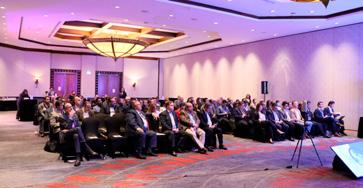




42 Business in Action 2023
AmCham in Pictures
Photo Album Ver más
Asamblea General General Meeting
Planes SAT
Superintendency of Tax Administration (STA) Plans
Sigue la conversación de los eventos en:

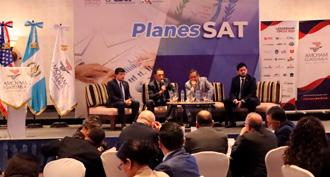






43 Business in Action 2023
Reunión con Embajada de los Estados Unidos Meeting with U.S. Embassy









 Executive Director
Executive Director






































 Gabriel-Gómez Partner
Gabriel-Gómez Partner









































